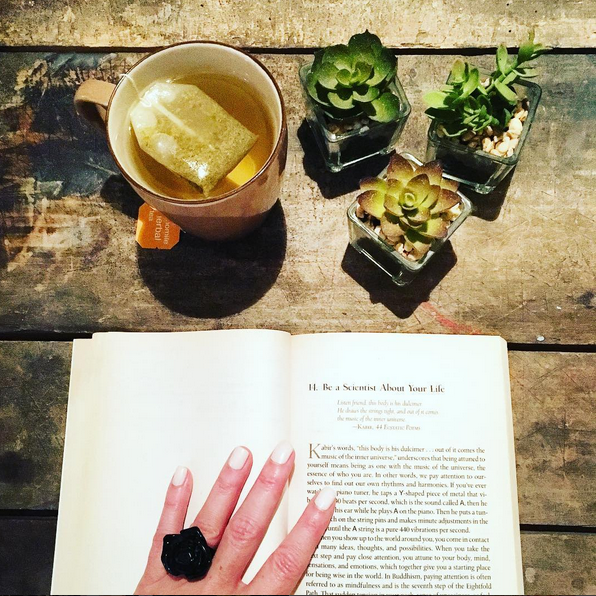
For years I hosted a monthly, then quarterly online book club here on the blog. Nothing fancy, simply shared a new read and encouraged others to read along. Since moving to the new website last year, I couldn’t figure out the right way to implement it within the framework.
As I was reading before bed last night, I thought why not write book reviews or share snippets of what I’m reading? I’m typically reading 20+ books at a time—albeit slowly—but there is one that I’m savoring right now like a fine wine, If the Buddha Got Stuck: A Handbook for Change on a Spiritual Path by Charlotte Kasl, Ph.D.
Although I’m only 1/3 through this book, I thought it would be a good one to start with as it’s so darn juicy. And dense. I read each two- to three-page chapter, pause, and then reread it. Always with a pen in hand.
I love Kasl’s work. She’s a psychotherapist and describes herself as a “peace and social justice activist.” This is the third book of hers that I’ve read and each one is filled with nuggets of insight.
Earlier this week I read something powerful in a chapter titled “Be a Scientist About Your Life.”
Kasl writes: “When you . . . pay close attention, you attune to your body, mind, sensations, and emotions, which together give you a starting place for being wise in the world. . . That sudden tension in your neck, sense of uneasiness, or feeling of calm are the convergence of thousands of signals moving from outside you to inside and back again. To be mindful is to notice them, pay attention, and use them as information.”
We receive so much stimuli on a daily basis and when we pause, it’s helpful to notice what is going on mentally, physically, and emotionally. You may think ah my head is hurting, I’m hungry, or I’m really upset about that earlier interaction. We can go entire days—lives—without noticing what’s going on inside.
She goes on to say: “Paying attention means becoming a scientist about your mental habits. When your inner voices are competing in a jumble of confusion, you can slow them down, take them apart, and listen to each one. Okay, let’s see. 1) I’m really upset in this relationship. 2) But I’m afraid of making a mistake if I leave. 3) I’d feel like a failure, I’ve messed up so many relationships. 4) Geez, I’m wanting some candy. 5) If I can just shift my attitude maybe it will all work. 6) I’m sleepy. I have clients go into each part and explore everything it has to say, and then start having a conversation with each other. So much of getting unstuck involves slowing down whatever is going on inside so you can bring it all on screen and explore it. You quiet down the mental jumble and confusion by taking it apart.”
I found this “slow down and tune in” reminder helpful for exploring some of those 50-70k daily thoughts. Especially when we keep in mind that our thoughts are not reality. Repeat: thoughts are not reality.
What happens when we peel back the thought layers as she showed in 1-6 above? What is it that your body, emotions, or thoughts may be trying to say? Practice being a scientist and observe the inner cacophony. There’s so much to learn if only we’d listen. Bisous. x
